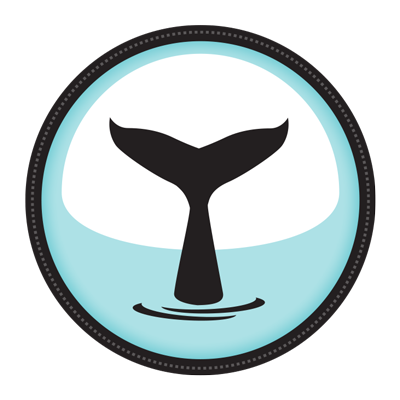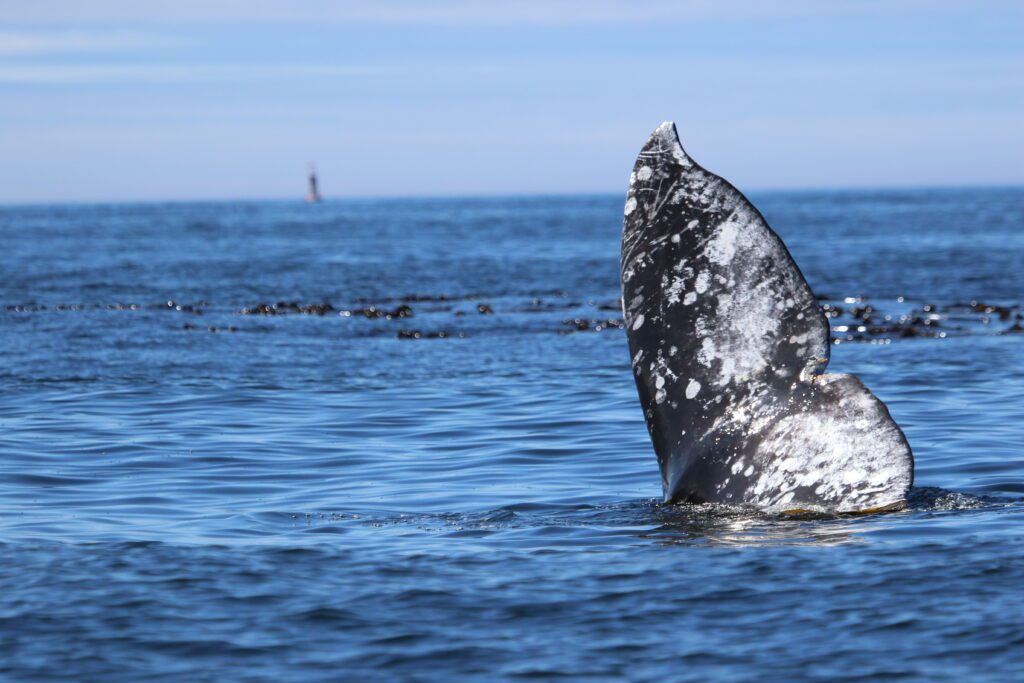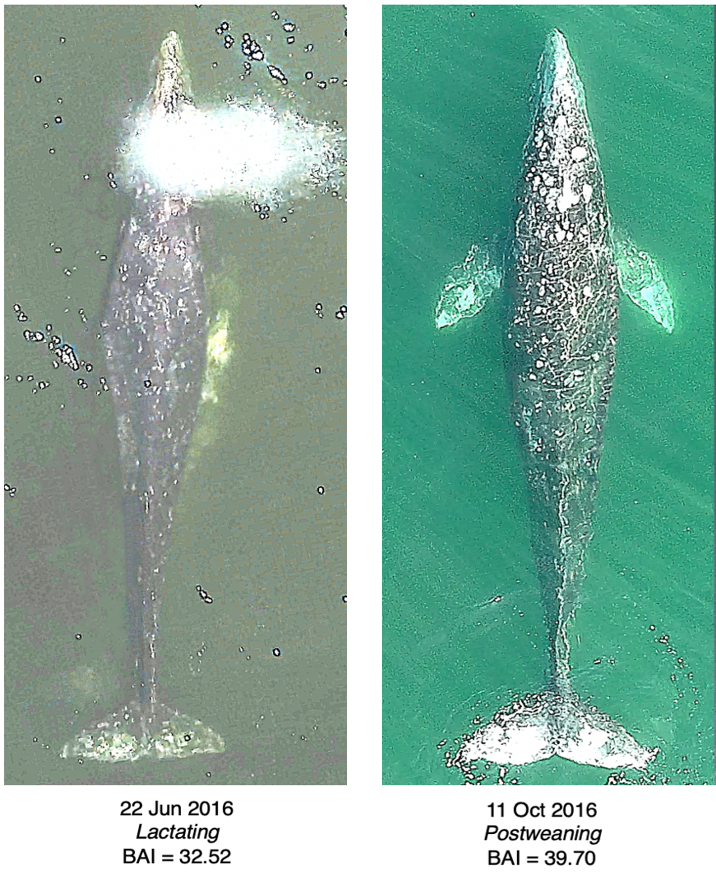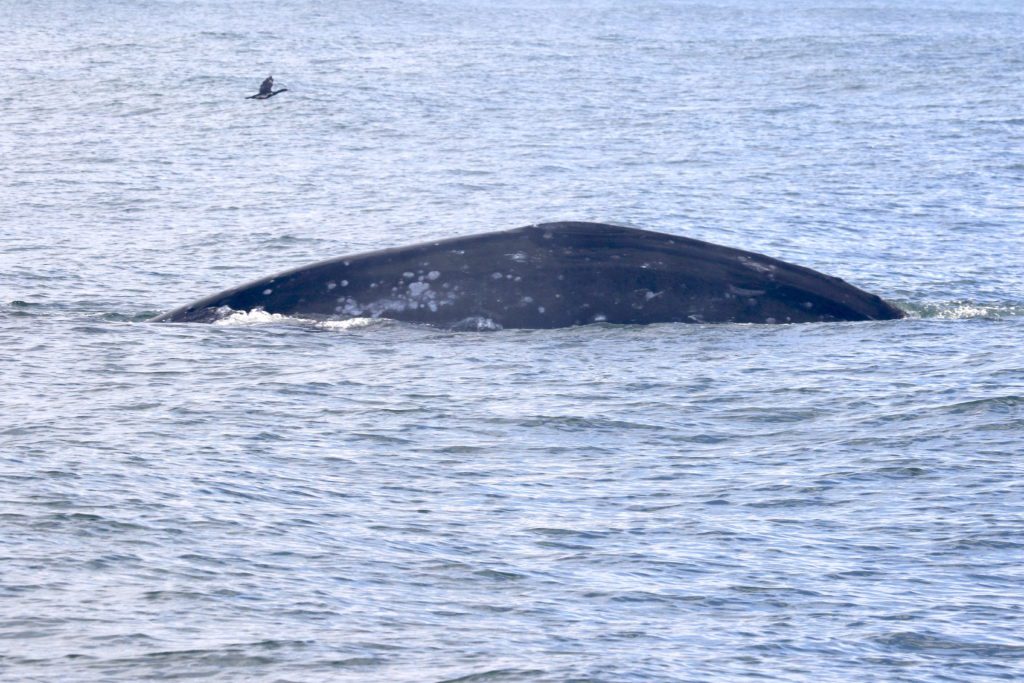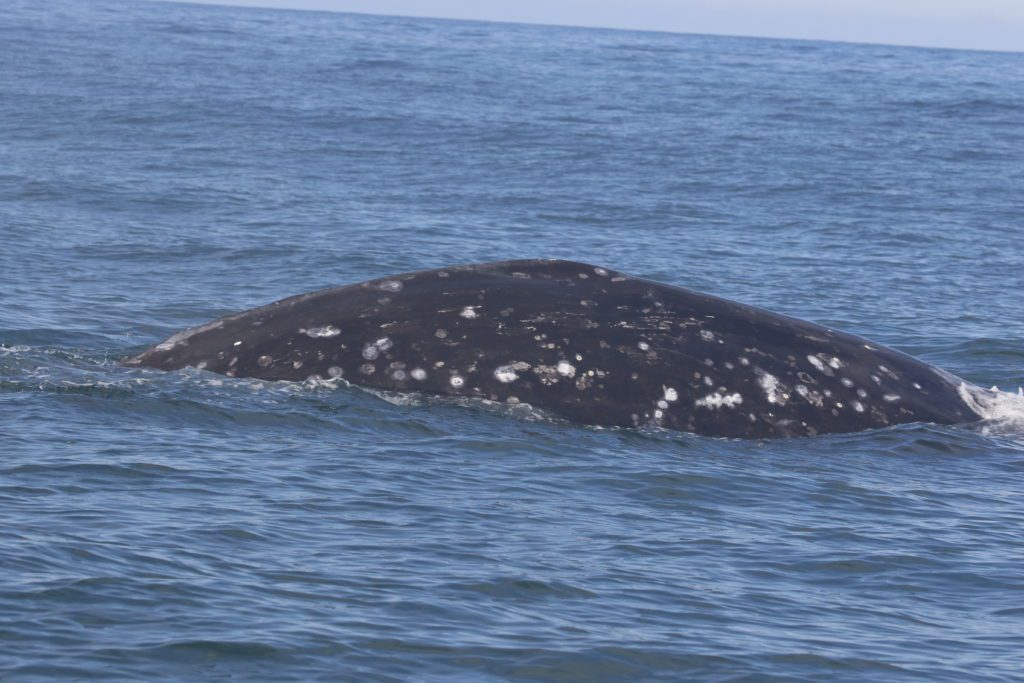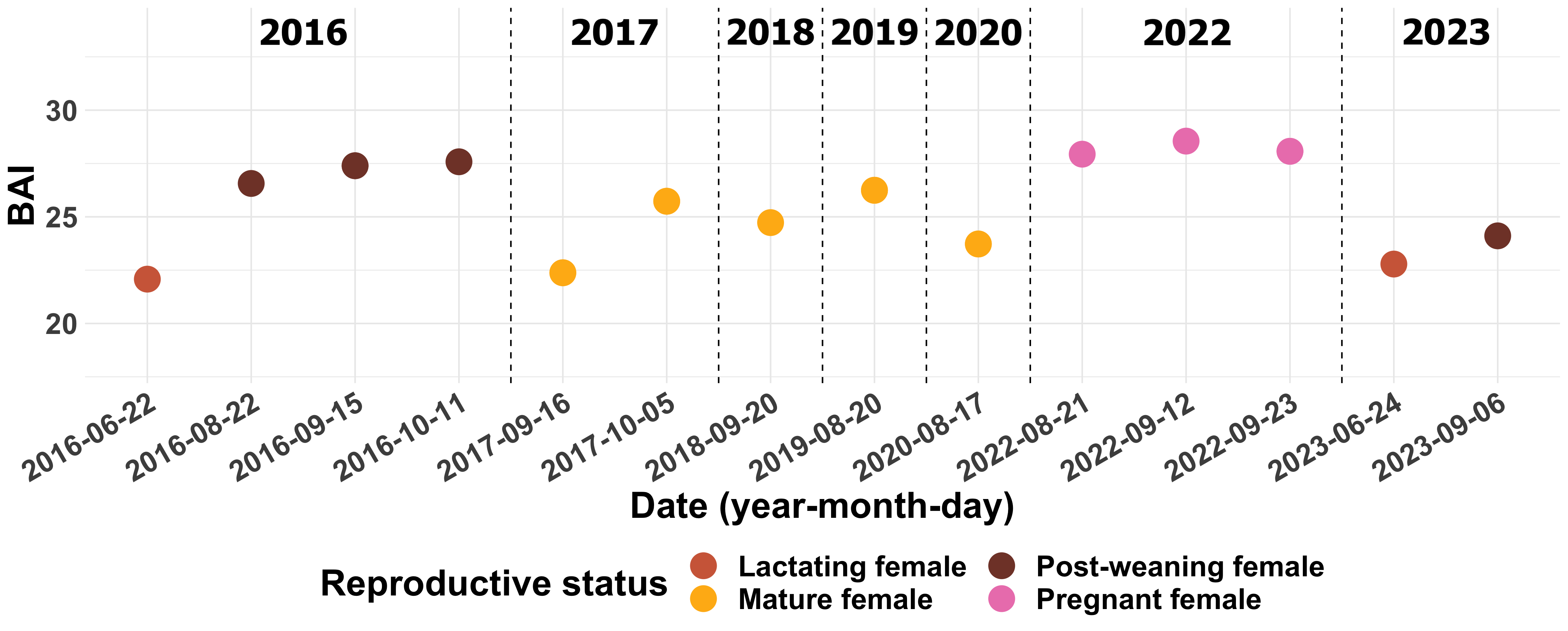Here, we would like to introduce you to not one, but two whales! “Clouds” and “Cheetah” are a mom-calf pair that we first observed in 2016 during Cheetah’s first year of life (making Cheetah about 8 years old as of 2024). While we did not document Clouds during her pregnancy (as we have for other whales), we tracked her progressive weight gain using drones as she transitioned between lactating, post weaning and resting states. Since 2016, we have observed both of these whales at least once every year feeding in our study region along the central Oregon coast.
Clouds and Cheetah are a very interesting case study as they represent an example of vertical transmission of cultural knowledge from a mother to her calf. It is currently unknown how a gray whale “becomes” a PCFG whale instead of being part of the larger ENP gray whale population that feeds in the Arctic region each summer. Is a whale born into the PCFG? Or does a whale learn about this feeding range from other whales and then try it out? Or both? We are working with collaborators to try to uncover this mystery, but Clouds and Cheetah illustrate an example of a calf being born into the PCFG, and staying a PCFG whale (at least so far). The fact that Cheetah has returned to the PCFG range during each summer to feed, just like its mom Clouds, suggests that use of the PCFG range as a summer feeding ground may in fact be a learned behavior passed down from a mom to her calf.

